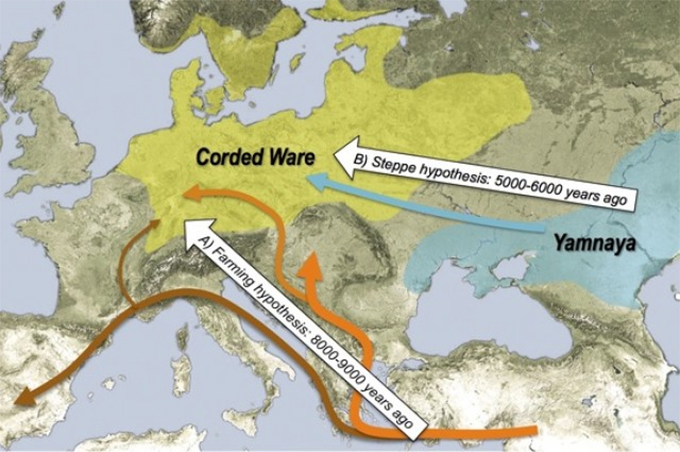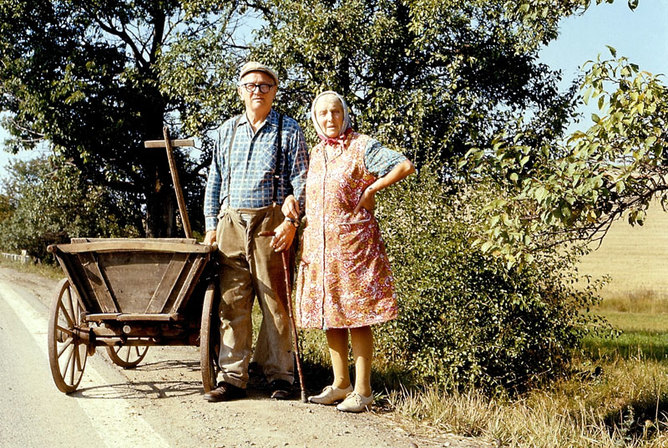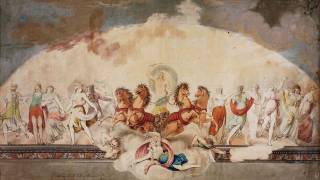European Invasion: DNA Reveals The Origins Of Modern Europeans
Source: iflscience.com

Europe is famously tesselated, with different cultural and language groups clustering in different regions. But how did they all get there? And how are they related?
One way of answering these questions comes from digging up relics of the past. Europe has a rich archaeological record, ranging from periods well before the famous metal ages (i.e. copper, bronze and iron) to the recent adventures of the Romans, Vandals, Huns and Vikings.
Distinctive types of pottery and cultural practices associated with burials and settlements have been used to group the ancient populations into individual “archaeological cultures”. However, it hasn’t been clear whether there is a genetic basis for these group boundaries or whether they’re just cultural.
Another line of evidence to illuminate how various groups are related comes from their languages. There is the well known Indo-European language tree – ranging from Hindi to Russian to Spanish. But it’s also quite unclear how the languages spread to their present regions.
Now we have another layer of information to help us reveal the history of European peoples: DNA sequencing.
Along with our colleagues, we have been using genome sequencing technology to analyse the vast array of ancient skeletons recovered from across Europe, ranging from the original hunter-gatherer inhabitants to the first farmers who appear around 8,000 years ago, and right up to the early Bronze Age 3,500 years ago.
The genetic results paint a fascinating picture, and were published in a recent series of papers in Nature and Science.
Third Wave
What we have found is that, in addition to the original European hunter-gatherers and a heavy dose of Near Eastern farmers, we can now add a third major population: steppe pastoralists. These nomads appear to have “invaded” central Europe in a previously unknown wave during the early Bronze Age (about 4,500 years ago).
This event saw the introduction of two very significant new technologies to western Europe: domestic horses and the wheel. It also reveals the mysterious source for the Indo-European languages.
The genetic results have answered a number of contentious and long-standing questions in European history. The first big issue was whether the first farmers in Europe were hunter-gatherers who had learnt farming techniques from neighbours in southeast Europe, or did they instead come from the Near East, where farming was invented.
The genetic results are clear: farming was introduced widely across Europe in one or two rapid waves around 8,000 years ago by populations from the Near East -– effectively the very first skilled migrants.
At first the original hunter-gatherer populations appear to have retreated to the fringes of Europe: to Britain, Scandinavia and Finland. But the genetics show that within a few thousand years they had returned, and significant amounts of hunter-gatherer genomic DNA was mixed in with the farmers 7,000 to 5,000 years ago across many parts of Europe.
Wheeling Across Europe
But there was still a major outstanding mystery. Apart from these two groups, the genomic signals clearly showed that a third -– previously unsuspected – large contribution had been made sometime before the Iron Age, around 2,000 years ago. But by whom?
We have finally been able to identify the mystery culprit, using a clever new system invented by our colleagues at Harvard University.
Instead of sequencing the entire genome from a very small number of well preserved skeletons, we analysed 400,000 small genetic markers right across the genome. This made it possible to rapidly survey large numbers of skeletons from all across Europe and Eurasia.
This process revealed the solution to the mystery. Our survey showed that skeletons of the Yamnaya culture from the Russian/Ukrainian grasslands north of the Black Sea, buried in large mounds known as kurgans, turned out to be the genetic source we were missing.
This group of pastoralists, with domestic horses and oxen-drawn wheeled carts, appear to be responsible for up to 75% of the genomic DNA seen in central European cultures 4,500 years ago, known as the Corded Ware Culture. This must have represented a major wave of people, along with all their cultural and technological baggage.
Speaking Tongues
This discovery also answered another major archaeological conundrum: who or what was the source of the Indo-European language family, which is wide-spread across Eurasia and the world, and includes English, Spanish, French, Greek, Russian and Hindu?
Archaeologists had two major hypotheses: the language family came with either the invading Near East farming wave more than 8,000 years ago, or some form of steppe population sometime much later. Evidence in support of the first hypothesis was the large scale cultural turnover evident with farming.
The second hypothesis was supported by linguistic evidence of common words across Indo-European languages for things like wheeled vehicles and transport that would match the economy and toolkit of the steppe herders.
Our new genomic data finally provides a smoking gun – or a wheeled cart in this case – as the missing evidence of a major cultural contribution from the steppe in the early Bronze Age. While we can’t definitively prove that the Yamnaya were the first to introduce Indo-European language to Europe, the size of the genetic input suggests that it brought at least major parts, if not the whole thing.
So for those of us with European heritage, the next time you see an oxen-drawn cart, or a domestic horse, think “that’s my heritage”, along with a good chunk of hunter-gatherer and a firm base of early farmer.
Top photo credit: Map depicting the two major hypotheses of the spread of Indo-European languages (white arrows) and geographic distribution of the archaeological cultures described in the text. Wolfgang Haak, Author provided
Source: iflscience.com























